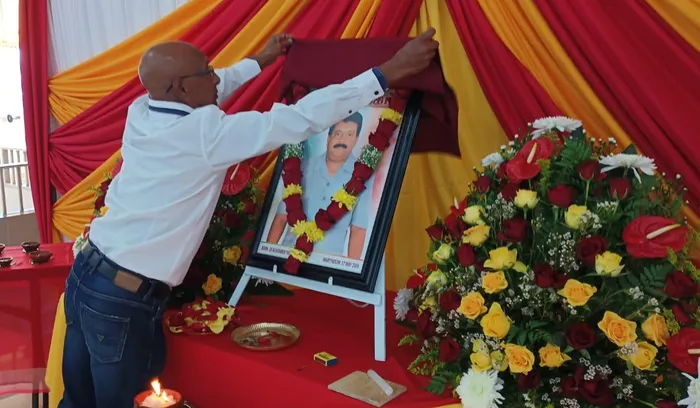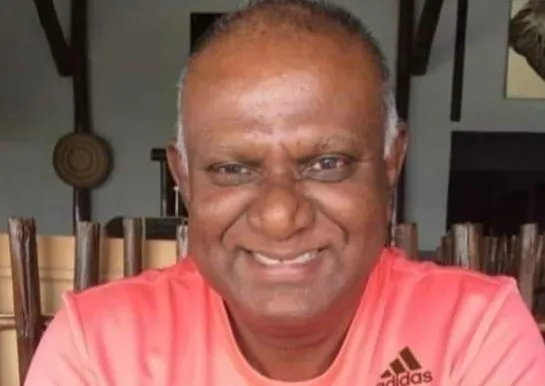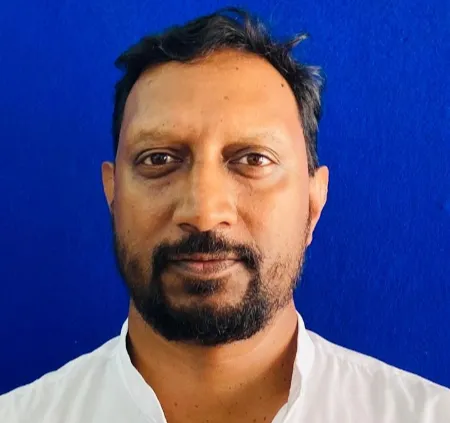No accountability for murders at Mullivaikal
Mullivaikal Massacre

The Arutpa Kazhagam in Chatsworth honoured the memory of the dead and those brutalised in the Mullivaikal Massacre. At the event, Koven Jogianna unveiled the picture of late V Prabhakaran, who sacrificed his life during the conflict.
Image: Supplied
AN ESTIMATED 40 000 civilians lost their lives in the Mullivaikal Massacre on May 18, 2009, when the Sri Lankan military surrounded a village of 300 000 Tamil civilians, displaced persons and surviving members of the Liberation Tigers of Tamil Eelam (LTTE).
It was the final days of the long-running civil war from 1983 to 2009 where Sri Lankan Tamils were campaigning for an independent Eelam homeland.
This past Sunday the Arutpa Kazhagam on Lenny Naidu Drive in Chatsworth gathered to honour the memory of the dead and those brutalised in the conflict. The street is named in recognition of another martyr, who was kidnapped and murdered by apartheid security forces at the height of the struggle for South African freedom in 1998.
At the time when war crime atrocities were committed against the Sri Lankan Tamil community, Arutpa Kazhagam was at the centre of South African relief efforts and solidarity activism. A delegation that included South African Tamil leaders like Dr Kisten Chinappan travelled abroad to meet with Velupillai Prabhakaran, founder and leader of the Liberation Tigers of Tamil Eelam (LTTE).
Deputy foreign minister and one of the first armed combatants of uMkhonto we Sizwe, Ebrahim Ebrahim was also key to efforts to broker a dialogue between the LTTE and the Sri Lankan government. Their efforts were constantly stonewalled by the authorities in Columbo.
Another constant voice of conscience was the humanitarian movement, Amnesty International, whose primary focus has historically been on the welfare of political prisoners.
Speaking at an earlier Mullivaikal anniversary commemoration, Agnès Callamard, Secretary General at Amnesty, noted: “(This) anniversary is a grim reminder of the collective failure of the Sri Lankan authorities and the international community to deliver justice to the many victims of Sri Lanka’s three-decade-long internal armed conflict... Ahead of this event, we have witnessed a clampdown on the memory initiatives, including arrests, arbitrary detentions and deliberately skewed interpretations of the Tamil community’s attempts to remember their people lost to the war. Authorities must respect the space for victims to grieve, memorialise their loved ones and respect their right to freedom of expression and peaceful assembly.”
In a stark written and visual record, various institutions, including the United Nations High Commissioner for Human Rights, Dr Navaneetham Pillay, recorded that the Sri Lankan government forces and their armed political affiliates committed extrajudicial killings, enforced disappearances and acts of torture against Tamils suspected of links to the LTTE.
The LTTE’s own conduct in the armed struggle also came in for criticism. Like the staunch defenders of human rights and self-determination at the Arutpa in Chatsworth, none should be blind to the atrocities of armed conflict around the globe.
Whether Palestine, Sudan, Congo and the Great Lakes Region, Myanmar, Yemen, Ukraine or the jungles of South America, it is unarmed civilians who bear the most vicious brunt of war – death, destruction of homes and livelihoods, rape, forced migration and other atrocities. The boat loads of people streaming into Europe and the United Kingdom are invariably victims of war and instability in their home countries.
Similarly, the conflicts or instability in the Congo, Mozambique, Zimbabwe and the Horn of Africa are in large part the push factor for refugees, asylum seekers and undocumented migrants crossing into South Africa. One can easily identify these communities setting up home in informal settlements in just about every major city and town or clamouring for piecemeal jobs at traffic lights or working as car guards. No one leaves their homes for strange lands without being forced to.
Activism in support of peace and justice in Sri Lanka was no different from the present-day cries of, for example, Palestine, where ignoring international law banning indiscriminate shelling of protected zones results in the deaths of far more innocent civilians than armed combatants.
In stark parallels with Palestine, the Sri Lankan government had initially declared the Mullivaikal area a “no-fire zone” and told civilians to go there to be safe from the war. After corralling innocent civilians, the Sri Lankan army’s indiscriminate shelling launched a mass artillery barrage on the men, women, and children trapped there. Other than the 4 0000 deaths, a large number of the 300 000 civilians were locked up in infamous detention camps where more than 12 000 men and women were arrested by Sri Lanka’s anti-terrorism unit and detained in separate, secret camps.
The civil war ended on May 18, 2009, when Velupillai Prabhakaran was killed in action in the final months of the civil war. Every year since that tragic day on May 18, 2009, the Mullivaikal Massacre is commemorated around the world by the Tamil diaspora to memorialise the inhumanity of the Sri Lankan military and government.
The Arutpa Kazhagam keeps alive this memory to remind us of United States civil rights leaders, Dr Martin Luther King’s epic call to activism: “Injustice anywhere is a threat to justice everywhere.”

Kiru Naidoo
Image: Supplied

Selvan Naidoo
Image: Supplied
Kiru Naidoo serves of the board of the Gandhi-Luthuli Documentation Centre at the University of KwaZulu-Natal and Selvan Naidoo is the director of the 1860 Heritage Centre. Their books are available at www.madeindurban.co.za.
** The views expressed do not necessarily reflect the views of IOL or Independent Media.